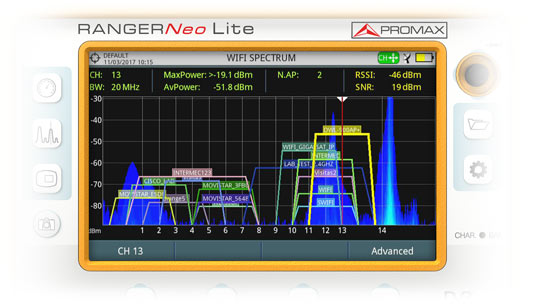
The hackrf_sweep tool itself allows much higher sweep rates. In my view this isn’t a limitation of the hardware, though. I guess this is way too slow to detect brief bursts. Using the software stack I mentioned in this post, I am only able to achieve sweep rates around 0.2 or 0.3s (mainly limited by the capabilities of QSpectrumAnalyzer). If you want to detect very narrow bursts on a WiFi channel you will need a high sweep rate. – The sweep functionality does overcome the 20MHz limitation but it does so at a price. The device has a standard SMA connector, so connecting suitable antennas shouldn’t be a problem. The ANT500 and ANT700 sold by Great Scott Gadgets are only rated up to 1GHz or 1.1GHz respectively. – You would need a suitable antenna for WiFi frequencies. But I can at least name potential issues here: I’m probably unqualified to answer this as I neither have any experience with alternative SDR devices nor with WiFi surveying.

If you found this article interesting, you may also want to read about how not to use the HackRF as a spectrum analyzer, showing you how using a simple SDR as spectrum analyzer can give very misleading results. The mentioned workarounds are in place since QSpectrumAnalyzer 2.2.0. hackrf_sweep will still run with its native sweep rate but QSpectrumAnalyzer will drop sweeps to reduce the rate accordingly. As a workaround, rate limiting was added by allowing to set a minimum sweep interval. Depending on the frequency range and the bin size, the sweep rate of hackrf_sweep overloads QSpectrumAnalyzer, rendering the application unusable.Depending on the system load, this can significantly reduce the effective sweep rate.

In QSpectrumAnalyzer, this is dealt with by entirely dropping sweeps with wrong bin count.


 0 kommentar(er)
0 kommentar(er)
